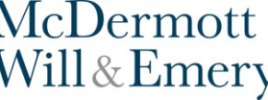In Teva Pharmaceuticals USA, Inc. v. Sandoz, Inc., No. 13-854, slip op. 574 U.S. __ (2015), the U.S. Supreme Court ruled that underlying factual issues resolved while formally construing a disputed patent claim term at the district court level are subject to a clear error standard of review as opposed to a de novo standard.
The Patent at Issue
The litigated patent claimed a method for manufacturing Copaxone, Teva’s multi-billion dollar a year drug used in the treatment of multiple sclerosis. Sandoz, as a generic pharmaceutical challenger under the Hatch-Waxman Act, attacked the patent as indefinite because it contained claim language describing an active pharmaceutical ingredient having a “molecular weight of 5 to 9 kilodaltons.” Although three accepted definitions1 exist in the relevant art to calculate “molecular weight,” the method of calculation to be used was not described in the claim, the patent specification, or the prosecution history. The district court took evidence on this issue, namely through extrinsic expert testimony, and ruled that “molecular weight” would have been calculated by determining the “peak average molecular weight.” Accordingly, the district court held the phrase to be definite and accepted the understanding advanced by Teva’s expert. The Federal Circuit, however, reversed and held that the claim was indefinite after reviewing the district court claim construction de novo.
The Supreme Court’s Decision
In the majority opinion, authored by Justice Breyer, the Court explained that claim construction may involve both legal and factual elements that could necessitate differing levels of appellate scrutiny. Specifically, if a patent claim term is construed based upon the intrinsic evidence alone (i.e., patent claims, specification, and prosecution history), the determination is exclusively one of law, subject to de novo review. However, if the intrinsic evidence is not dispositive of the meaning of a claim term, then extrinsic evidence can be consulted (e.g., expert testimony, technical dictionary definitions, etc.) to better understand the meaning of the term. It is these underlying “facts” relating to extrinsic evidence that are reviewed according to the clear error standard. The Court reasoned that the District Judge, having presided over the entire proceeding, has a comparatively greater familiarity with the “specific scientific problems and principles” than the appellate court and should be afforded deference on factual findings. While the new scheme announced by the Court changes the standard of review for subsidiary factual matters, the ultimate issue of claim interpretation will still be reviewed de novo.
What is the Significance of Teva v. Sandoz?
The holding in Teva could have broad-ranging implications for clients in the procurement and enforcement of their patent rights. Below are a few examples of how the decision could impact current patent practice.
As an initial matter, patent owners should pay particular attention to the sufficiency of the disclosure with regard to key elements of the claims and consider specifically defining these elements in the specification through, for example, the use of a glossary. Such a strategy could help avoid protracted battles of the experts that could result in claim terms being redefined in ways never intended by the patent owner. While this approach has the potential to narrow claim scope, and may require additional time and expense during patent prosecution, it could result in a stronger, more effective patent less susceptible to post-Teva based challenges.
In the context of litigation, the Teva decision could provide motivation for litigants to create “factual issues” that are determinative of claim construction. Patentees, for example, may be tempted to try and broaden the scope of their claims by creating ambiguities in claim language in order to advance constructions that were never originally intended but may now be supported by extrinsic evidence. Alternatively, accused infringers may attempt to create as many factual disputes as possible with regard to the meaning of a claim in an effort to lock the patent owner into an unfavorable finding. Regardless of the motivations of the parties, district courts will likely become more attentive to these issues knowing their claim construction determinations could be afforded a higher standard of review. It is possible that the Teva decision could even result in broader acceptance among district court judges of “trial-like” Markman hearings with submission of expert testimony and extrinsic evidence at the claim construction stage.
Finally, in light of the changing claim construction standard of review in federal courts, parties (petitioners) should consider how this will impact the use and significance of inter partes review (IPR) proceedings. For example, IPR proceedings provide petitioners with a “broadest reasonable interpretation” standard for claim construction, while also allowing petitioners to submit an expert declaration in support. Since patent owners are typically not given an opportunity to submit a rebuttal expert declaration before the Board institutes trial, this can provide a preliminary advantage for petitioners attempting to secure a favorable construction, as an initial finding on claim construction is usually made as part of the institution process. Moreover, the patent owner may find it difficult to overturn the initial claim construction inertia, whether during the postinstitution phase or on appeal after a final decision on the merits has been made by the Board.
Many questions remain in the wake of Teva, as patent owners and challengers alike will be faced with new claim construction strategy scenarios relying on extrinsic evidence.
1 The three accepted definitions to determine “molecular weight” included a (1) peak average molecular weight; (2) number average molecular weight; or (3) weight average molecular weight.









